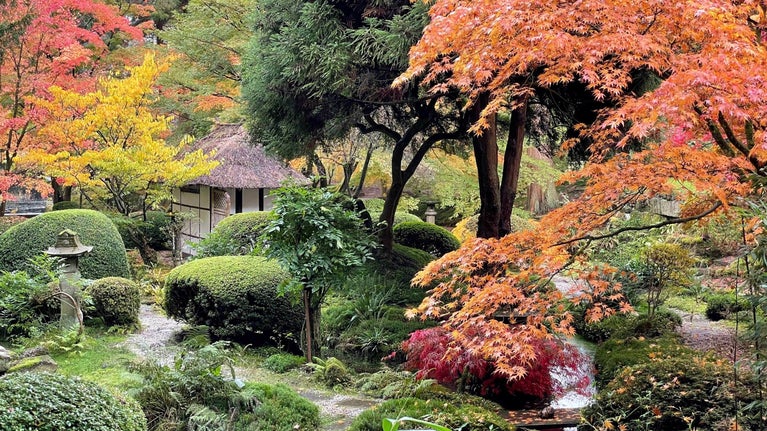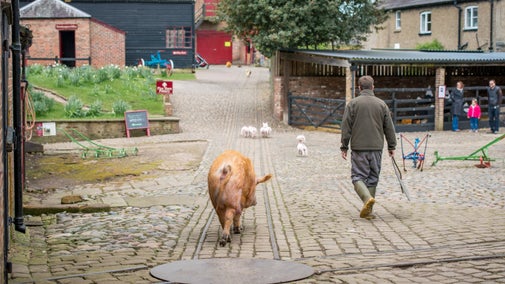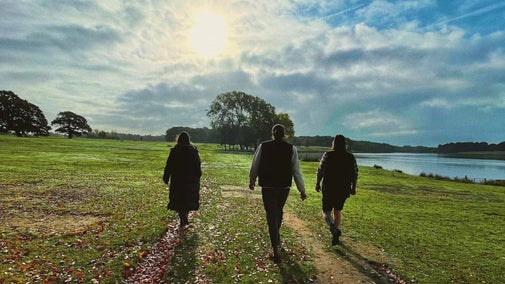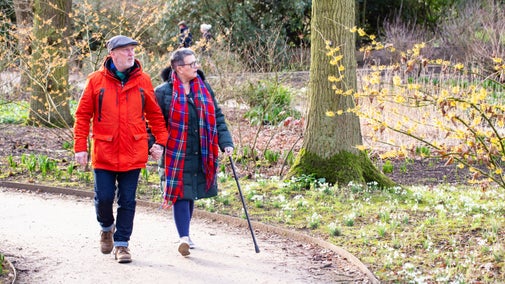
Discover more about Tatton Park
Tatton Park is cared for by Cheshire East Council on behalf of the National Trust. Find out more about Tatton Park.

Wander through the garden at Tatton Park and you'll discover a number of distinct areas within its 50 acres, including the Japanese Garden, Fernery, Kitchen Garden and Tower Garden.
The gardens at Tatton are full of colour and interest throughout the year – even in the colder months. Here's just some of what to look out for this winter:
In the mid nineteenth century Joseph Paxton, architect of the Crystal Palace designed Tatton's Italian Garden. With its aspect looking across to the Peak District this is the perfect place to pause and admire the view.
The Japanese Garden was almost certainly the result of Alan de Tatton’s visit to the Anglo-Japanese exhibition at White City in London in 1910. He got together a team of Japanese workmen to create what is now said to be ‘the finest example of a Japanese garden in Europe'.
Today you can see the Shinto Shrine, an arched footbridge and other Japanese artefacts. Each of the plants, stones and rocks are carefully placed to produce a natural balance. With blossoming cherry trees in spring, red and orange hues in autumn, and snow topped mounds in winter, theres something new for you to see every time you visit.

The Fernery, Conservatory and Pinery are impressive examples of glasshouses built in the 1800s and remain intact. The Egertons imported tropical plants from their travels to New Zealand and Australia, some of which are still part of the collection today.
Simon Tetlow, Head Gardener at Tatton, has recently created a new display of orchids and bromeliads in the Conservatory.
Designed specifically for enjoyment, the Pleasure Grounds are a collection of distinct areas within Tatton's gardens. These include the Maze, Charlotte's Garden, Topiary, Italian Garden, Rose Garden, Tower Garden, Arboretum, Choragic Monument and African Hut.
Within the newly refurbished Italian Garden you can see Thuja ‘Brabant’s which have been planted for their resilience to climate. The secluded Rose Garden is the perfect place to enjoy a quiet moment in the summer months – it was a favourite of Lady Anna Egerton's too.
The walled Kitchen Garden reflects an almost forgotten era and demonstrates the importance of traditional skills and procedures. From mushroom sheds and onion stores to barns and glasshouses, all have been restored to their former use.
Tatton’s Head Gardener makes sure that all the plants in the walled Kitchen Garden are grown free of chemicals. Additionally, only plants that would have been grown up until 1900 feature here, making the garden a piece of living history.
Here you'll find historical scarlet emperor runner beans, local British queen potatoes and quirky fat lay blonde lettuces. Other typically Edwardian types of fruit and vegetables grow here, and you can buy or eat them on the estate when they're in season.

Tatton Park is cared for by Cheshire East Council on behalf of the National Trust. Find out more about Tatton Park.
Learn about 1930s farming practices and techniques, meet traditional and endangered species of farm animals and learn where our food comes from in a unique interactive exhibition.

Stop off for lunch made from Tatton produce at the Stables Restaurant. Then take home some local produce from the Stableyard shops.

Explore the mansion at Tatton Park, a National Trust property cared for by Cheshire East Council. Discover its opulent state rooms, vast collection and complete servants’ quarters. The mansion will reopen in March 2026.

With 1,000 acres of parkland, there’s plenty to do on the Tatton Park estate. See the variety of wildlife or practise a range of outdoor activities.

From the woodland garden at Dunham Massey to the industrial garden landscape at Quarry Bank, discover winter gardens in bloom in this corner of the North West.

A garden for all seasons, an ancient deer park and a house filled with treasures and stories.

The working mill is the beating heart of Quarry Bank. Set in picturesque gardens and countryside, explore one of Britain's greatest industrial heritage sites.
